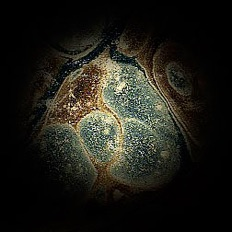ARCHAIC
The archaeogenetics of Iberian cattle
investigating their origins, evolution and improvement
The aurochs (Bos primigenius) is the wild ancestor of domestic cattle and its evolutionary history is mainly unknown. Iberian aurochs disappeared in the end of the Chalcolithic, having coexisted with domestic cattle of Middle Eastern origin for millennia (see chronology). Probably, either hybridization between wild and domestic cattle and/or local domestication of aurochs occurred. Iberian native cattle may represent relics from extinct aurochsen. Genetic data question the single domestication hypothesis of taurine cattle and revitalized the debate on the possibility of postdomestication introgression of aurochsen. This discussion is pertinent regarding Iberian cattle, which show high genetic diversity despite the notable geographic distance of this territory from the presumed NearEastern centre of domestication.
It is agreed that diachronic (spanning long time scales) ancient DNA studies are required to infer the origins and evolutionary trajectories of domestic animals. Heterochronous genetic data allow a direct investigation of changes within populations over time, and of the patterns of admixture between wild and domestic animals.
Genetic data from zooarchaeological specimens collected in Iberia/North Africa is scarce despite their relevance to our understanding of the evolutionary history of European domesticates. ARCHAIC is focused on the study of past populations of aurochs and domestic cattle in the Eurasian periphery –Iberia and the Maghreb.
We propose a MULTIDISCIPLINARY approach – merging Zooarchaeology and Genomics – which is critical to capture the temporal and geographical dimensions of the history that shaped the genetic composition of cattle.

